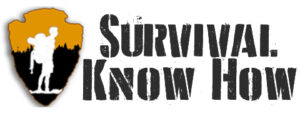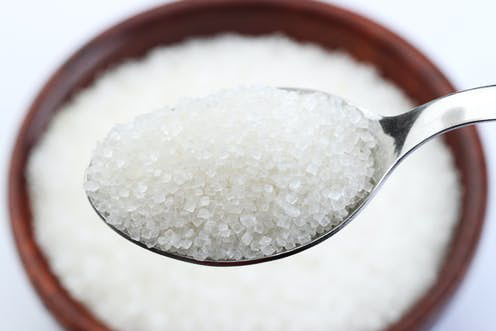Part of being a survivalist means taking everyday items that we commonly take for granted and then applying those items to a number of different DIY and survival applications. One of these items that can be applied to a large number of applications is none other than sugar. Most of us have at least some sugar in our kitchen, regardless of what form it is in.
There’s no denying that sugar has a very sweet and desirable taste that alone can be a morale booster in a disaster scenario. But there are many more survival uses for sugar beyond that and we will explore ten of them in this article.
Sugar is something that you should store both in small amounts in your bug out bag and in large bulks in your survival pantry. It’s inexpensive, widely available, and easy to store. If you’re still not yet convinced that you need to be storing hoards of sugar or including it in your bug out bag, here are ten reasons why you should:
BURST OF ENERGY
Survival is going to be exhausting, and a quick burst of energy is sometimes all you will need to trek over the last hill or complete your next survival task. Sugar is packed with fructose and glucose that your body will absorb and quickly give you the energy you need to complete your next task.
CATCH BEES
Bees can be a major problem in a grid down scenario if you or any member of your group is highly allergic and you won’t have access to a hospital. Bees are highly attracted to sugar, so adding sugar into your bee trap will be a very easy way to limit the number of bees bugging you or your plants.
FIRE STARTER
This is a little known survival use of sugar. But yes, it can be used to start a fire. Here’s what to do: combine your sugar with water and potassium permanganate. Then, bring that mixture into contact with a spark or a flame created by a fire starting device and you will have a fire going in no time. This is a quick and easy way to start a fire in wet environments where any tinder or kindling you find is too damp or soaked.
HANDWASHER
You may have never thought that you could use sugar as a hand washer, but you can. Mixing equal amounts of sugar and liquid soap will not only clean your hands, it will make them fully free of any bad odors as well.
HEAL MOUTH SORES
The overwhelming majority of mouth sores, either on the tongue or the gums, are not life threatening. But there’s no denying that they can be extremely annoying and distract you from any tasks you need to complete for your survival. Simply place some sugar directly over the sore and the pain will go away temporarily.
INCREASE THE LIFE OF YOUR SURVIVAL GARDEN
One of the best self-sustainable food sources in a disaster situation is a garden that can provide you with crops and herbs to feed your family through trying times. To increase the life of specific crops or plants in your garden (in the event that you have enough to eat now but don’t want to let more growing crops to go to waste), merge one tablespoon of water with every liter of water you use for watering your garden. It will increase the life of your plants by decreasing the growth and spreading of harmful bacteria.
ELIMINATE COCKROACH INFESTATIONS
Cockroaches may not sound like an immediate threat, but the truth is that heavy infestations of them can spread disease and inflict damage on your buildings or home. In a disaster scenario, cockroach infestations are the last thing you want to be worrying about. Mixing sugar with baking soda is the perfect DIY cockroach killer because they will be attracted to the sugar and then killed when they inhale the baking soda.
PRESERVING FOOD
In a grid down scenario, you’re most likely not going to have a freezer to preserve your food. Rather than let all of that food go to waste, turn to more creative methods to preserve it. One of those method is to use sugar. Sugar kills bacteria by depriving them of oxygen and resisting bacteria in the outside air. That’s why many survivalists store their foods, meats and vegetables alike, inside jars of sugar and to ensure that it lasts a long time.
TREATING HYPOGLYMECIA
Hypoglycemia refers to a condition in which an individual eats too little to match the physical activities that they do, lowering their glucose levels and leading to lightheadedness, dizziness, and excessive shaking. This can be a real threat in a survival situation where food is limited but where there are also a large number of physical tasks you need to complete to ensure your survival. Consuming small amounts of sugar at regular intervals while you work can offset hypoglycemia due to the high levels of glucose it contains.
TREATING AN OPEN WOUND
This is an old survival trick that has been used by our ancestors for entire millennia. Sugar can not only be used to clean any open wounds inflicted on you, but it can also speed the healing of the wound by preventing an infection from setting in. As we mentioned earlier, the reason why is because sugar naturally kills bacteria by depriving them of oxygen, decreasing the chance of infection and increasing the rate of healing.
To correctly apply sugar on an open wound, first clean the wound with water and then dry it with a cloth or a bandana. Next, take a pinch of sugar and gently sprinkle it directly over the wound. Some of the sugar will dissolve, but this is normal. You’ll want to add enough sugar so that a tiny pile is visible, however. Then, lay still and keep the wound exposed other than the sugar on it. The sugar will shield the wound from bacteria in the air while eliminating any existing bacteria it comes into contact with.
After you have laid still in this manner for at least an hour, rinse out the wound with water and dry it again. Then, seal the wound in a bandage or a gauze pad and leave it that way for twenty-four hours. At the end of the twenty-four hour period, re-open the wound and evaluate it. If it still looks bad, repeat the above process by sprinkling sugar over the wound, air drying it for an hour, and then re-bandaging. Repeat this process again until a scab has appeared over the wound.
Recent Posts
So 2020 was a rough year. We saw massive hurricanes, including one spot in the Gulf Coast that was stuck by two different hurricanes mere days from one another. We also witnessed one of the...
When many people get into prepping, they commonly focus on fantasies about the end of the world and building a bug-out bag to help prepare them. But the truth is these scenarios only come...

